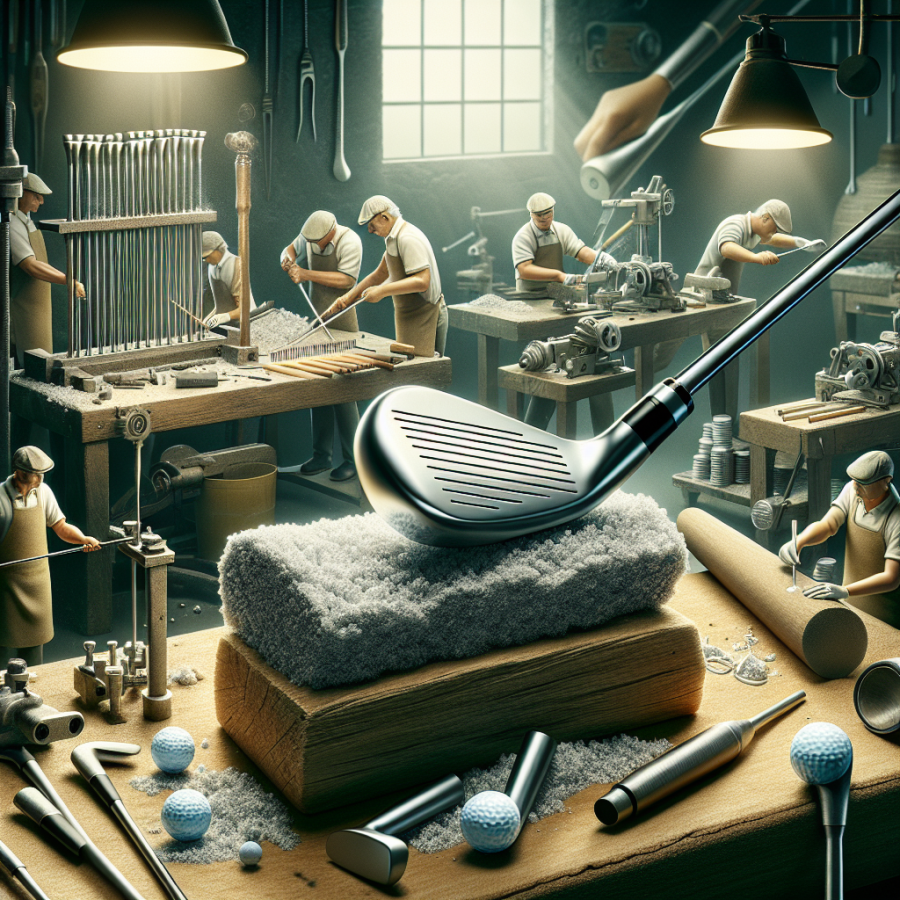Exploring the Intricate Craftsmanship in Golf Club Production
The rising popularity of golfing has stimulated an increased demand for avant-garde golf clubs. Surprisingly, the creation of these essential pieces of equipment is a combination of meticulous craftsmanship and advanced scientific principles.
Golf club manufacturing involves numerous materials, including wood, iron, and plastic. These can be transformed into different parts of the golf club, such as the head, shaft, and grip—each of which requires comprehensive understanding and enjoyable techniques. The art and science of this production process is undoubtedly intriguing and worthwhile to explore.
The first step in the manufacturing process is the design phase. Here, designers fuse creativity with the practical needs of the golfer. Detailed sketches are rendered into digital 3D models using advanced software. These models simulate the club's performance, providing an understanding of how minute changes in design can impact a club's behavior. Designers are effectively artists, sculptors shaping the form and function of the club based on their masterful knowledge of golf mechanics.
Next comes the crafting of the club head, where the real craftsmanship in golf club production shines through. Whether cast or forged, the club head requires a precise molding process to create the perfect shape and weight. When creating a wooden or ‘wood’ head, strong yet lightweight materials like titanium or steel are heated to high temperatures and poured into pre-made moulds. In the case of iron heads, a forging process is preferred, where the head is made from a solid piece of metal that's heated and hammered into shape. Each process demands great accuracy, skill, and a strong understanding of the materials at hand.
The golf club’s shaft is another critical component that affects the club’s overall performance. They are usually manufactured from steel or graphite, each offering different strengths and flexibilities to cater to various golfing styles. Employing extremely accurate machines, the material is cut into tubes before being taper-ground to achieve the desired shape and flex. This requires substantial precision as any inconsistency can affect the golfer’s swing.
The grip—being the golfer’s only point of contact with the club—requires careful attention to detail. It is usually made of a composite material, first molded into the desired shape, then covered in a textured material to provide the necessary feel and grip. Its size and texture can greatly affect a golfer’s control and, therefore, the golf swing.
Quality assurance and testing is a vital part of golf club production process. Every club is thoroughly inspected for deficiencies or irregularities.
Read also:
Preview to Golfing Glory: A Look Ahead to the Golf Majors of 2023
The Crucial Role of Science in Enhancing Golf Club Performance
The process of manufacturing golf clubs has massively evolved over the years, transitioning from a craft-based process to one highly influenced by science and technology. The design and development of golf clubs now relies heavily on scientific knowledge and technological expertise, and this science-led innovation plays a crucial role in enhancing golf club performance.
One scientific principle that plays a crucial role in golf club manufacturing is the concept of moment of inertia, an essential factor that influences the efficiency and effectiveness of a club swing. Moment of inertia measures the amount of resistance an object, in this case, the golf club, presents to rotational motion. By scientifically manipulating the distribution of weight within the club head, manufacturers can improve the moment of inertia, reducing the impact of mis-hit shots, and generally providing golfers with more control.
Aerodynamics is another critical aspect of science applied to golf club design. Scientific research has led to an understanding of how airflow can adversely affect a golf swing's speed and strength. By incorporating intricate patterns, such as dimples, into golf club head designs, manufacturers can minimize air resistance and enhance the efficiency of a player's swing.
In this era of smart technology, the role of science in golf club manufacturing extends into the realm of data analysis. Systems like motion sensors and high-speed cameras provide deep insights into the mechanics of a golfer's swing. Using this data, manufacturers design golf clubs to better match a player's swing pattern, improving overall performance.
Material science further plays an essential role in the manufacture of golf clubs. High-tech materials such as titanium, graphite, and various composites have revolutionized golf equipment designing. These materials are lightweight and strong, enabling manufacturers to make more durable, powerful, and effective golf clubs.
Adjustability is yet another significant fruit of science in golf club production. Players can now make various adjustments to their clubs, including changing loft, lie angle, and face position, thanks to scientific innovations. This technology allows golfers to customize their golf clubs to their swing, leading to improved shot accuracy and consistency.
Finally, computer simulations and modeling contribute significantly to optimal golf club design. Through these technologies, manufacturers can assess different design parameters and their impacts on club performance before actual production. These technologies, combined with high-powered mathematics and physics, allow club designs to reach a level of sophistication that was previously impossible.
In conclusion, science significantly influences the manufacturing of golf clubs, impacting each stage of the design and production process.




